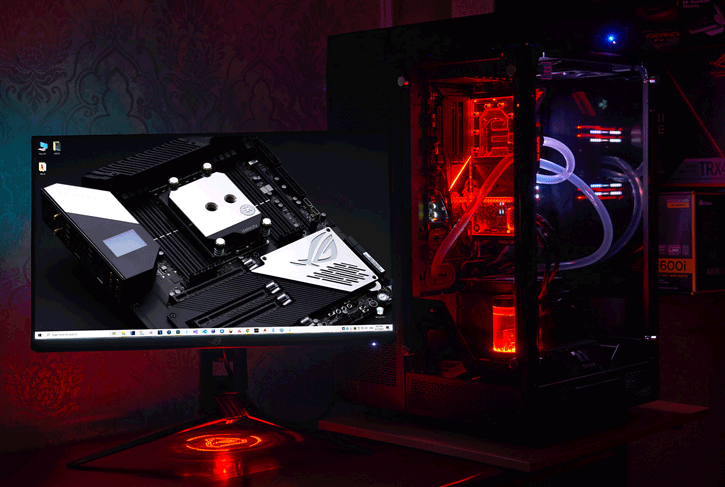Conclusion
Final Words & Verdict
ASUS ROG XG279Q is a truly unique monitor. For $600 (or at least it should be priced like that), you get a versatile WQHD solution for both gaming and color. The design and quality of the materials are fully in line with the class of enthusiast products. At the same time, the monitor has absolutely all the modern technology that may be needed even for the pickiest eSportsman. I will close the material today in a special way, with a list of pros and cons, perhaps it will be useful for those who are not used to reading the material from the beginning to the end.
Advantages:
- Frameless design and full compatibility with the ROG Bezel Free Kit;
- ELMB mode - gaming comfort for gamers and a must for eSports;
- Contrast ratio of 1264 and maximum brightness of 450 cd/m² were higher (and better, of course) than the manufacturer stated;
- The sRGB color coverage in all modes was 99.9%;
- Colour coverage of DCI-P3 was 94.8% after calibration (90% declared);
- Average ΔE*94 of 0.25% and maximum ΔE*94 of 0.87% after calibration corresponds to the professional monitor level;
- Supports Adaptive-Sync and G-Sync in Compatible mode;
- 170Hz for WQHD;
- VESA DisplayHDR 400;
- Good factory setting on gamma curves (but not gray balance) for default Racing mode;
- Excellent gradient quality after calibration;
- Premium design according to the ROG series product concept;
- Excellent quality of materials and assembly;
- Joystick - easy to set up the monitor;
- Height, tilt and portrait mode adjustment;
- VESA 100 × 100 mm mounting standard;
- Flicker-free backlighting (Flicker-Free) throughout the brightness range;
- Excellent viewing angles;
- Convenient OSD menu for adjustment;
- 2 differentiated backlighting for the monitor, as well as the ability to control the backlighting with Aura Sync;
- Moderate Glow-effect;
- Availability of USB hub version 3.0;
- It is possible to set up the monitor via OS;
Which you might not like:
- Pulse-width modulation in ELMB mode;
- The upper right and left corner of the monitor has problems with brightness uniformity and a slight deviation in color temperature;
- Useless factory presets, except for the default Racing;
- Gray gradient uniformity problem, in all modes, the ΔE*94 average varies from 2 to 4.71%. It is not desirable to work professionally with graphics without calibration;
- Color temperature far from D65 in all modes, average ~7100K. %. Without calibration it is undesirable to work professionally with graphics;
- When using Matrix Acceleration (OD), artifacts (above Level 2) can be observed;
- The presence of a slight crystalline effect;
- A slightly overvalued price;
- In sRGB emulation mode, you cannot adjust the brightness;
The calibration results impressed me, it's not what I could expect from a gamer monitor. If you don't work with graphics or printing, you may not even think about calibration, the standard Racing profile has quite decent factory calibration results (Hilbert: gaming mode uses the default calibrated settings from factory). As for the drawbacks, for me, it was one thing - uneven back-lighting and a slightly pronounced crystalline effect (maybe I'm just used to monitors with higher ppi values). Maybe, I have come across such a specimen. That's it for this article, we hope you enjoyed this read. Considering this review was performed offsite we'll leave out awards.
- Sign up to receive a notification when we publish a new article
- Or go back to Guru3D's front page


